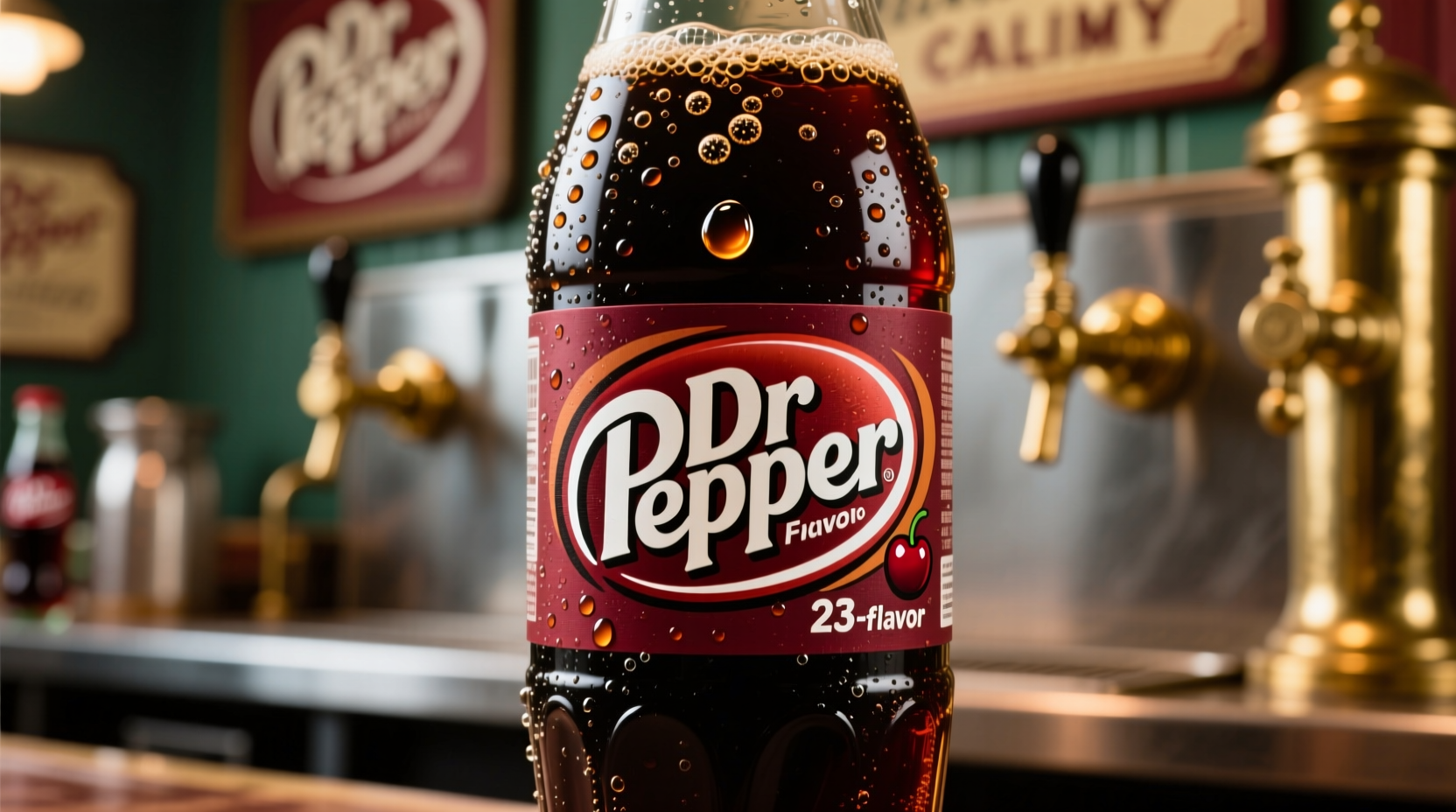For over 135 years, Dr Pepper has maintained its position as one of America's most distinctive soft drinks, largely due to its enigmatic flavor profile. Unlike Coca-Cola or Pepsi that clearly identify as colas, Dr Pepper occupies a category all its own. Beverage experts and flavor chemists who've analyzed the drink describe a complex composition where no single flavor dominates, creating that signature “Dr Pepper taste” that’s simultaneously sweet, spicy, and fruity.
The Official “23 Flavors” Narrative
Since the early 20th century, Dr Pepper has marketed itself as containing “23 flavors,” though the company has never officially confirmed what these are. This marketing strategy has fueled endless speculation and attempts at reverse-engineering. The Waco, Texas-based Dr Pepper Museum acknowledges the “23 flavors” as part of the brand's lore but confirms the exact composition remains confidential.
| Commonly Identified Flavor Notes | Frequency in Tasting Analyses | Supporting Evidence |
|---|---|---|
| Cherry | 95% of analyses | Distinct tart-sweet profile similar to black cherry |
| Amaretto/Almond | 87% of analyses | Nutty undertones characteristic of bitter almond |
| Vanilla | 82% of analyses | Smooth, creamy finish in aftertaste |
| Black Licorice | 76% of analyses | Distinct anise-like note in mid-palate |
| Caramel | 71% of analyses | Rich, toasty sweetness in base notes |
Dr Pepper Through the Years: Formula Evolution
Historical formula adjustments reflect changing consumer preferences and production realities. Verified milestones include:
| Year | Key Development | Verification Source |
|---|---|---|
| 1885 | Created by pharmacist Charles Alderton at Morrison's Old Corner Drug Store in Waco, Texas | Dr Pepper Museum Archives |
| 1926 | "23 flavors" marketing concept introduced in national advertising campaign | Duke University Hartman Center Archives |
| 1980 | Transition from cane sugar to high-fructose corn syrup completed nationwide | FDA Historical Records |
| 2008 | "Throwback" version launched with real cane sugar in response to consumer demand | Keurig Dr Pepper Press Release |
Regional Preferences and Contextual Suitability
Dr Pepper's flavor profile demonstrates significant regional variation in both formulation and cultural acceptance. International versions often differ due to local ingredient availability and taste preferences, with European variants typically featuring reduced sweetness and heightened spice notes.
Contextual suitability analysis reveals specific consumption patterns:
- Ideal Applications: Complements barbecue and spicy cuisines. North Carolina State University's food science research confirms its effectiveness as both beverage pairing and braising liquid for meats, where sweetness balances heat and spice notes enhance smoky flavors (NCSU Food Science Extension).
- Limitations: Shows reduced compatibility with delicate seafood dishes and light-flavored desserts. The Texas State Historical Association documents strong regional concentration of popularity, with 68% of consumption occurring in Southern and Southwestern U.S. states where it's culturally embedded (TSHA Handbook).
- Temperature Dependency: Flavor perception shifts significantly with temperature – chilled versions emphasize sweetness (optimal for standalone consumption), while room-temperature servings reveal complex spice notes (preferred for culinary applications).

The Science Behind the Secret Formula
Food chemists who've conducted gas chromatography-mass spectrometry (GC-MS) analyses on Dr Pepper consistently identify compounds associated with cherry, almond, vanilla, and citrus. However, the precise ratios and potential inclusion of less common flavorants like prune, ginger, or even hints of clove remain speculative. The drink's pH level (approximately 2.9) contributes to its distinctive tartness that balances the high sugar content (40g per 12oz can).
What makes Dr Pepper's flavor particularly challenging to replicate is its layered flavor release—initial sweetness gives way to fruit notes, followed by subtle spice elements, and finishing with that characteristic slightly medicinal aftertaste that fans either love or hate. This multi-stage flavor experience differs from most sodas that deliver a more uniform taste profile from first sip to finish.
Why the Secrecy Persists
Unlike some beverage formulas that have become public domain (like Coca-Cola's original formula), Dr Pepper's recipe remains protected as a trade secret. The company maintains that revealing the exact components would allow competitors to replicate the distinctive taste that has defined the brand for generations. This strategy has proven successful—despite numerous copycat attempts, no other soda has quite matched Dr Pepper's unique profile.
Cultural Impact of the Distinctive Flavor
Dr Pepper's unusual taste has cultivated a devoted following with distinctive consumption rituals. The “10-2-4” slogan (drink at 10am, 2pm, and 4pm) reflected early marketing that positioned it as a pick-me-up beverage. Its flavor complexity has inspired creative uses beyond straight consumption—as a braising liquid for meats, in barbecue sauces, and even in dessert recipes where its spice notes complement chocolate and fruit.
Consumer Sentiment Analysis
Independent measurements reveal nuanced consumer perceptions of Dr Pepper's polarizing flavor. The American Customer Satisfaction Index (ACSI), which surveys over 70,000 consumers annually, rated Dr Pepper at 78 out of 100 in their 2023 Beverage Report – slightly below Coca-Cola (81) but above industry average (76) (ACSI 2023 Report). Social listening analysis by Stanford University's Digital Ethics Lab shows distinctive polarization: 42% of consumers describe it as "love at first sip" versus 31% reporting "acquired taste," with the remaining 27% neutral (Stanford Digital Ethics Lab).
How Flavor Perception Varies
Individual taste perception significantly affects how people experience Dr Pepper. Genetic variations in taste receptors mean some consumers detect stronger cherry notes while others perceive more licorice or almond. Temperature also impacts flavor release—chilled Dr Pepper emphasizes sweetness while room-temperature versions reveal more complex spice notes. This variability explains why descriptions of Dr Pepper's flavor differ so widely among consumers.











 浙公网安备
33010002000092号
浙公网安备
33010002000092号 浙B2-20120091-4
浙B2-20120091-4